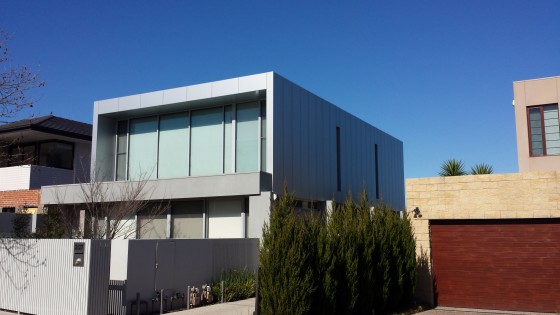However, these are not the only factors you need to consider when choosing your external wall cladding. The sustainability of the materials is also an important consideration. You want to be able to balance your home’s needs with the sustainability of the material, so that you can get the best choice for your home without causing damage to the environment.
But how can you assess the sustainability of a cladding material? You need to consider the following four factors:
- Embodied energy: This refers to the amount of energy used to manufacture the cladding. Some cladding may need to undergo more extensive processes than others, for instance. This can be a difficult fact to find out, but you can estimate based on the type of cladding, rather than the individual product.
- Sourcing: This refers to the materials used to manufacture the cladding, including how the raw materials are needed and if they are renewable. Ideally, you want a cladding that comes from renewable materials so that resources are not depleted.
- Recyclability: Ideally you should be able to
recycle or reuse the cladding once it is no longer fit to be used as cladding. This
can help reduce reliance on raw materials and also cut down on the embodied
energy needed to create other materials, including cladding.
- Energy reductions: Cladding can be a form of insulation for your home, meaning you can save on heating and cooling bills. This energy reduction saves you money but also contributes to reduced carbon emissions as less power is used.
Common cladding and their sustainability
Timber
The sustainability of timber cladding can vary depending on the specific type of timber cladding, like weatherboards, reconstituted timber and sheets, as well as the treatments applied to the materials to make them suitable as cladding. However, timber typically has a low embodied energy.
It is also sourced from renewable materials. However, it’s better if it’s made from forest waste or harvested from specially grown plantations. It should not be made from old growth forests as this can have devastating effects on the local ecosystem.
Unfortunately, timber cladding is difficult to recycle or reuse. This is usually because of the finishes and fixings used, as well as the joins. Some weatherboards may be chipped for mulch, but this can depend on what paint and treatments have been applied to them.
Further, timber is a poor insulator, but it can be made slightly more effective if it is thicker and sealed correctly.
Fibre cement
Fibre cement cladding has a higher embodied energy than timber, but one that is lower than steel. However, this can vary depending on the manufacturer and the specifics of the cement.
Typically produced as sheets, planks and weatherboards, fibre cement cladding is not made from renewable resources. While the raw materials are still abundant, this will not continue forever.
It also cannot be recycled and is rarely reused. This is because it is often cheaper to create new products as pre-used cement cladding is likely to be damaged from deconstruction.
This cladding is also not a good insulator.
Brick
Bricks are a common cladding choice, but a lot of energy is used to create them. Similarly, the raw materials needed are plentiful, but are not renewable.
Thankfully, bricks can often be recycled or reused. If a low-strength mortar has been used, the brick can often be reused as is or recycled into new bricks. Bricks can also be made into fill for other construction projects.
Bricks do not provide much insulation, so you’ll need to use a good-quality internal insulation.
Aluminium
Aluminium has highest embodied energy of any cladding. But it can be the best option for environments where corrosion is a real concern, such as coastal areas.
Like many cladding options, the raw materials are not renewable but are currently abundant. Thankfully, aluminium is highly recyclable and can be reused.
This cladding though does not provide much insulation. Therefore, you’ll need a good-quality internal insulation to get those energy savings.
Steel
Steel cladding is also created using high amounts of energy. And the raw materials required are non-renewable. But most steel cladding is actually made from 40% recycled materials. Steel is highly recyclable and reusable material.
However, it doesn’t provide much in the way of insulation, so you’ll need to save energy in other ways.











 Erika Rhein, the contributing author and the professional blogger by profession. With years of experience, I now focus on writing blogs on varied niches. Being a research enthusiast, I like to provide my readers with the useful and informative articles on the different topics they are looking for. I aim to create a difference through my writing.
Erika Rhein, the contributing author and the professional blogger by profession. With years of experience, I now focus on writing blogs on varied niches. Being a research enthusiast, I like to provide my readers with the useful and informative articles on the different topics they are looking for. I aim to create a difference through my writing.
0 Comments